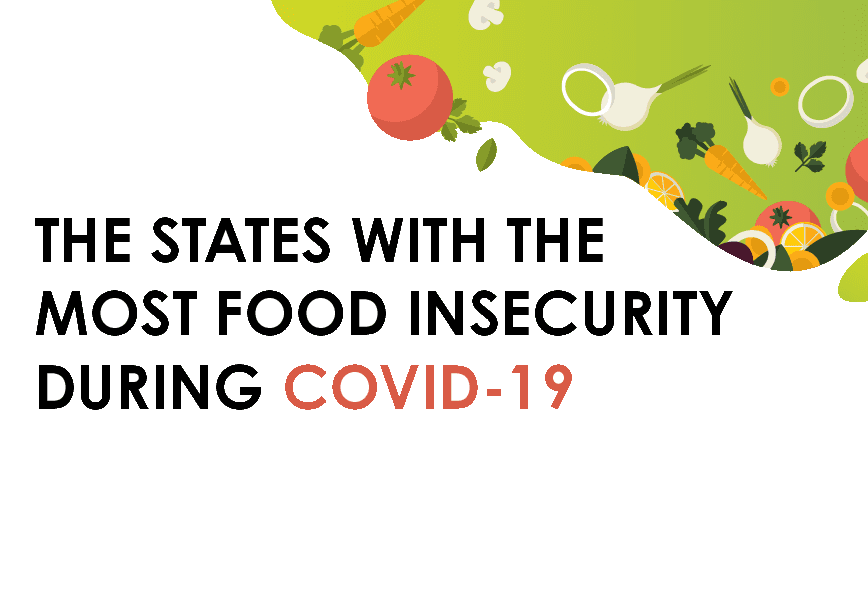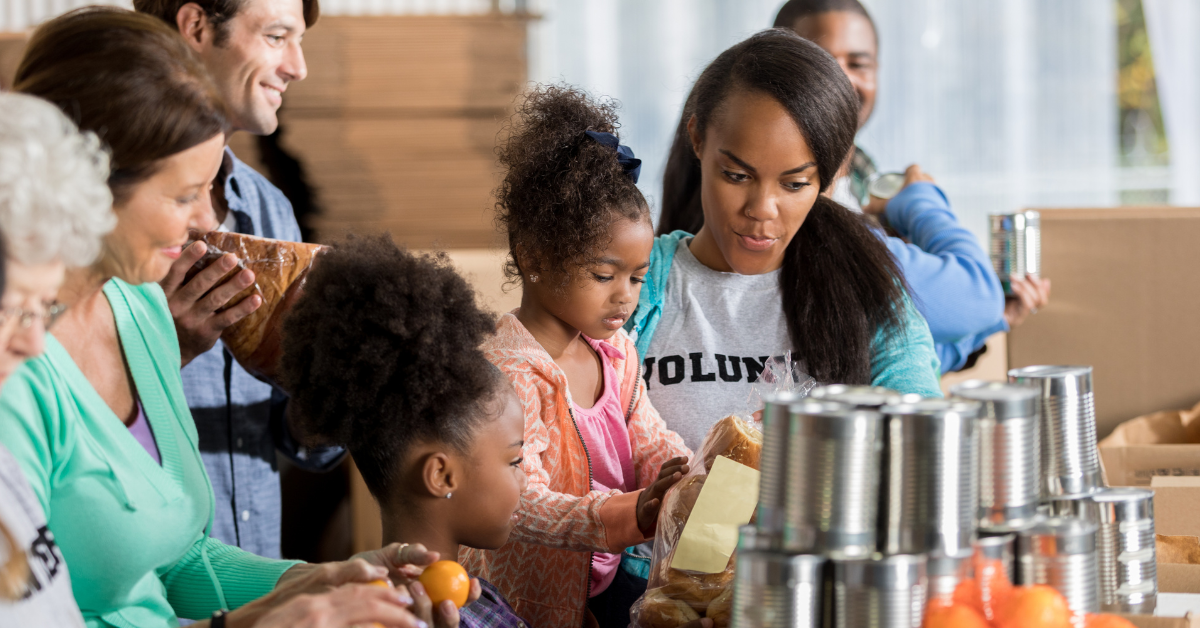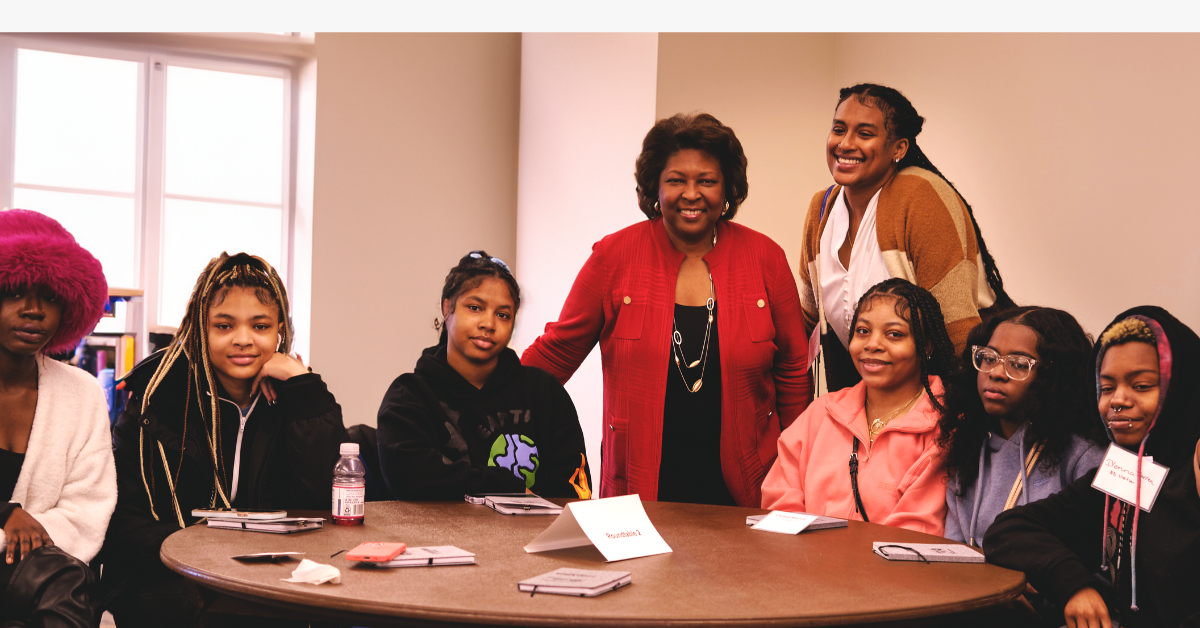
COVID-19 has challenged virtually all aspects of community health. Along with the immediate medical concerns brought on by the virus itself, important social distancing considerations also have some adverse health impacts. One very important consideration is centered around the burden of COVID-19 and social distancing on food insecurity in the United States.
Food insecurity has existed long before COVID-19. However, things like limited household budgets, reduced access to grocery stores, and limited provisions from meal services have deepened food insecurity. As national leaders and community organizers attempt to lead American families safely through COVID-19, the weights of COVID-19 on food insecurity vary across different communities.
Health and wellness is a core element of the United Way of the NCA’s focus, and understanding our communities’ hunger challenges is vital to serving our area. With national disparities in mind and local services at stake, we decided to analyze several factors to consider which states will face the most severe impacts on food security from COVID-19.
In our analysis, we considered several pre- and post-COVID-19 factors that impact food security directly or indirectly. We ranked states’ national positioning for each of these factors, then brought together the different factors to create a final ranking of the most and least food-secure states post-COVID-19.
Methodology
We considered eight different factors to determine which states will be most and least food-secure after COVID-19. Since food security is a complicated issue, we tried to account for immediate and indirect factors that would affect residents’ access and ability to receive food.
The factors that we considered include:
1) Percentage of state residents deemed food insecure by a pre-COVID-19 2018 Feeding America data report (Weight: 1)
2) Percentage of state residents qualifying for food support from SNAP or other nutrition programs according to a pre-COVID-19 2018 Feeding America data report (Weight: 0.25)
3) Extension of SNAP emergency funding through August and September as reported by the USDA’s Food and Nutrition Service (Weight: 0.25)
4) Percentage of state residents with low supermarket access living also in low-income areas according to a report from reinvestment.com (Weight 0.5)
5) COVID unemployment by state as reported by the Bureau of Labor Statistics for August 2020 (Weight: 1)
6) Percentage of the state’s labor force working in the top ten industries for food-insecure vulnerability (as ranked by Feeding America) according to the Bureau of Labor Statistics (Weight: 0.5)
7) Degree of openness in state public schools for grades K-12 ranked from on a five-point scale according to a report from edweek.org (Weight: 0.5)
8) Percentage of state students eligible for free and reduced-price lunch according to the National Center of Education Statistics (Weight: 1)
To compile our final rankings, we created a 50 point scale, giving each ranking a factor weight and then adding the factor scores to create an overall score.
Note: Factor weights are determined by the research team’s judgment on what is most important to the ranking. When determining the most food-insecure states, we determined the most crucial factors to be existing food insecurity, unemployment rates, and percentage of students receiving free and reduced-price lunch, and other factors to be secondary or tertiary in importance to the issue.
Report Findings
While other factors play a role in food access and affordability and the consequences of COVID-19 cannot be entirely predicted, we hoped to capture different important elements of state food access with this data.
The Most Food-Insecure States
According to our analysis, the most food-insecure state following the impacts of COVID-19 is Mississippi, scoring 33 out of a 50-point scale. Several important factors contributed to Mississippi’s high rankings including the fact that the state of Mississippi did not extend emergency SNAP allotments through September, a choice that will put more families with burdened budgets at risk of hunger in the coming fall months.
Further, Mississippi consistently ranks as one of the least healthy states in the country, according to American Health Rankings, meaning that COVID-19 food and nutrition insecurities might have even more adverse health effects amongst an already at-risk state population.
Following Mississippi, Washington, D.C. was the most food-insecure region post-COVID-19. Review the map below to see how each state ended up ranking.
Further, other data reveals that Washington, D.C. is a region where food insecurity is especially burdensome on children. The District of Columbia also had the highest percentage of residents working in industries that are most vulnerable to food-insecurity impacts and the highest percentage of students on free or reduced-price lunch.
In Washington, D.C., over 90% of students are eligible for reduced price lunches. With schools facing opening restrictions, this creates a huge gap in feeding hungry children that must be met outside of the school cafeteria. Here at United Way of the National Capital Area, we activated our Emergency Assistance Fund to provide food, basic needs, and other assistance to the District of Columbia, Maryland, and Virginia community members impacted by COVID-19, including those with school-age children who depend on their school’s meal program. Review the below map to see how the states that face the highest concentration of this issue.
The States with the Most Food Insecure Children
The United Way of the NCA is deeply concerned with leveraging community strengths to help make sure children in Washington, D.C. have access to regular and nutritious food so that they can succeed well in school and life. In our area, we have coordinated with the Weekend Hunger Backpack Program to bring together community leaders and passionate volunteers to prepare, package and distribute backpacks full of food.
Other states with especially high percentages of students on free or reduced-price lunch were Mississippi, Louisiana, and New Mexico.
The States with the Most Food Insecure People In the Labor Force
Of course, the burden to feed children not only falls on public schools but on families as well. Therefore, we also wanted to see how different states workers would be threatened by food insecurity. Therefore, using Feeding America rankings of the industries with the highest percentages of food-insecure workers, we ranked states hunger vulnerability based on resident work roles.
Once again, the top-ranking region was Washington, D.C. However, the states that followed spanned across varying regions and population demographics. Following Washington, D.C. was Kentucky, North Dakota, and Nevada. All three of these states have a high percentage of their population employed in service-industry roles, making them especially vulnerable to food insecurity, according to Feeding America.
It’s important to note that service-industry employees are facing COVID-19 and the financial impacts of layoffs at some of the highest degrees in the country. In May, Nevada’s unemployment rate peaked at 28.2%, the highest in the nation, according to The Nevada Independent. With so many Nevada workers out of work, putting food on the table could become a widely-felt challenge across many Nevada homes post-COVID-19. This presents a special challenge to policymakers in states like Nevada who will face decisions around extending hunger support systems and unemployment benefits.
The States with the Most Food Deserts
For some residents, food insecurity before and after COVID-19 is more a matter of access than affordability. On top of this, added barriers from COVID-19 like public transportation closures and reduced hours at grocery stores make it even harder for Americans to access food safely and frequently.

In the end, food insecurity is a large and complex problem that challenges different parts of our country in different ways. While some communities’ food security may be challenged by supermarket access, others will be challenged by school closings. As our nation continues to face financial and health challenges from COVID-19, it will be critical for local leaders to understand and respond to local needs and find ways to feed their neighbors.
To read more about how the United Way of the NCA is working with our communities to address local hunger challenges with programs like the Weekend Hunger Backpack Program, read about our programs here.






